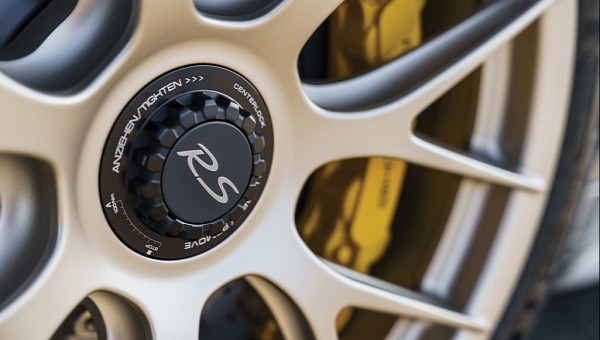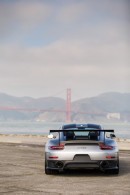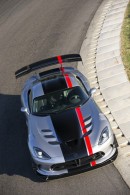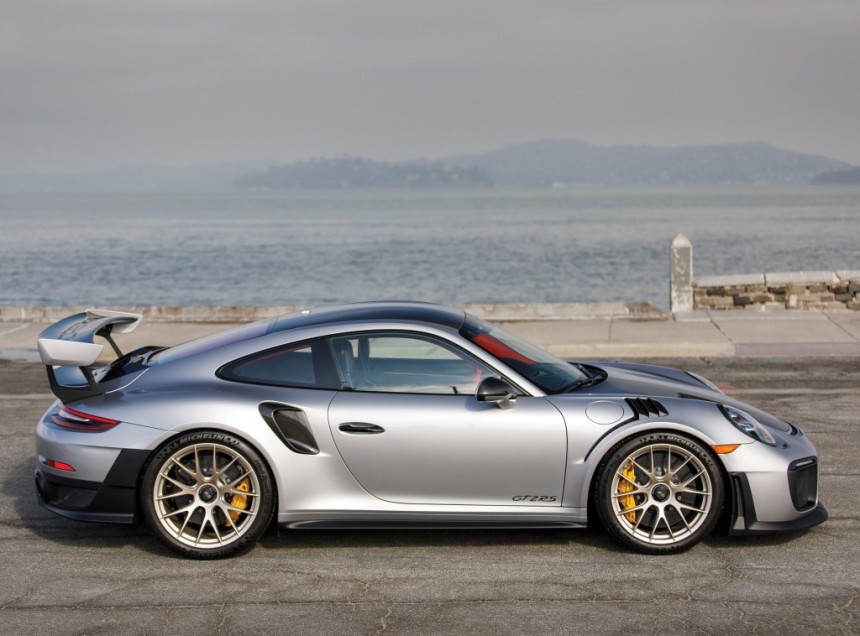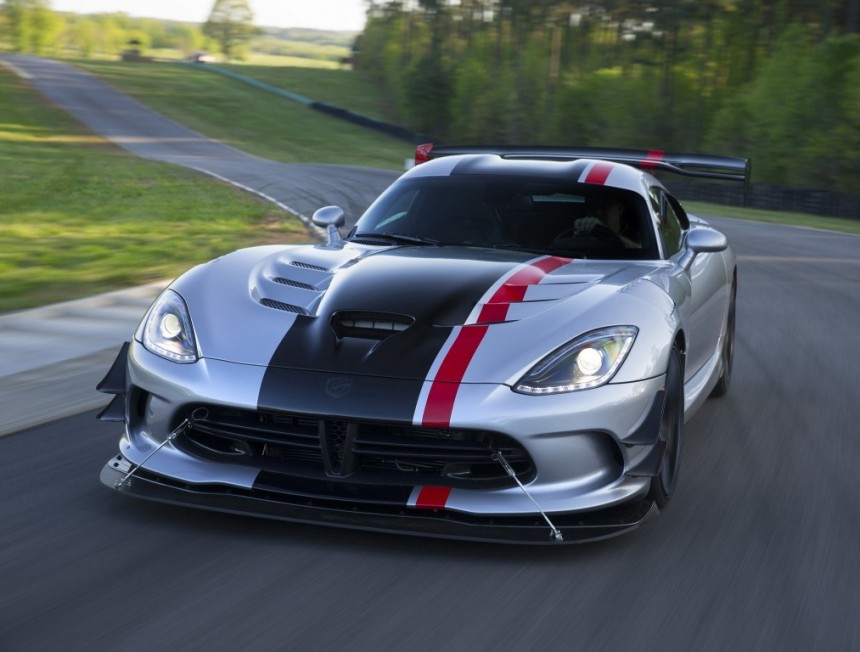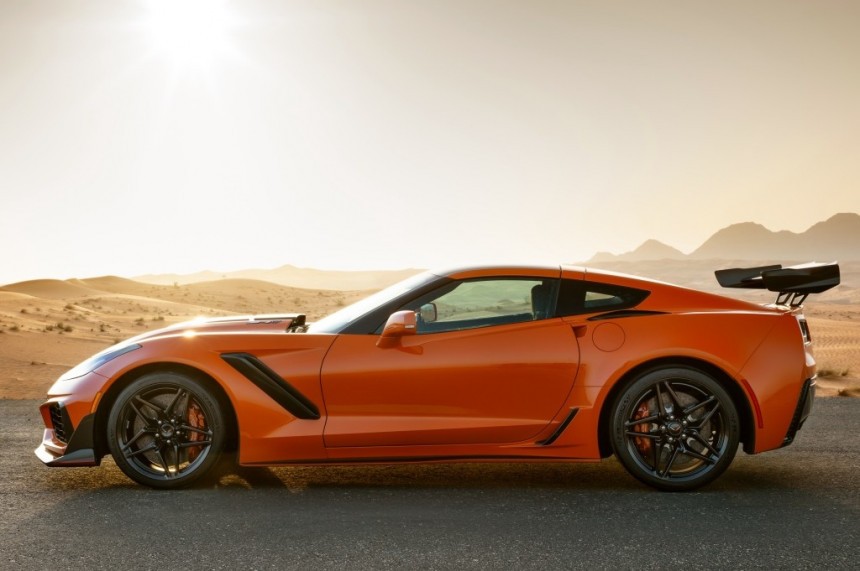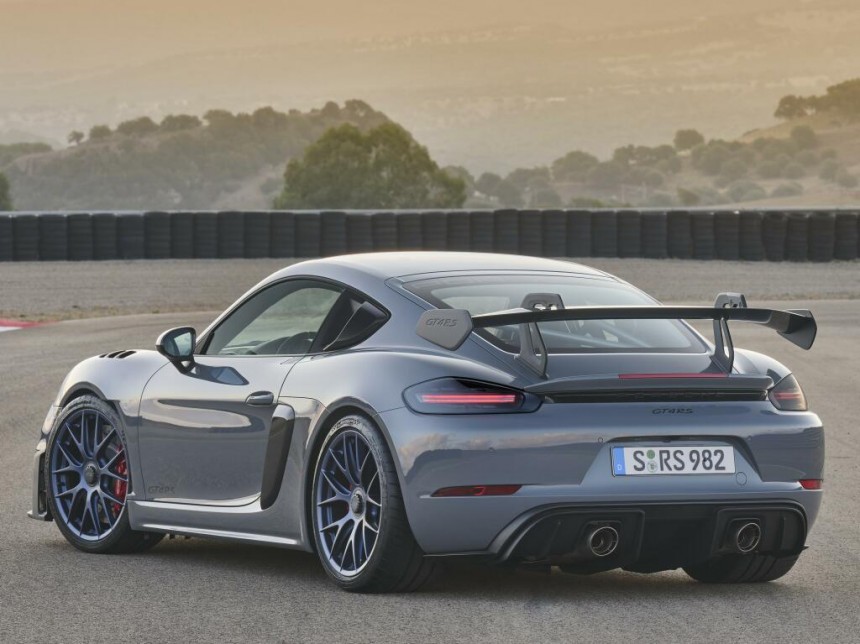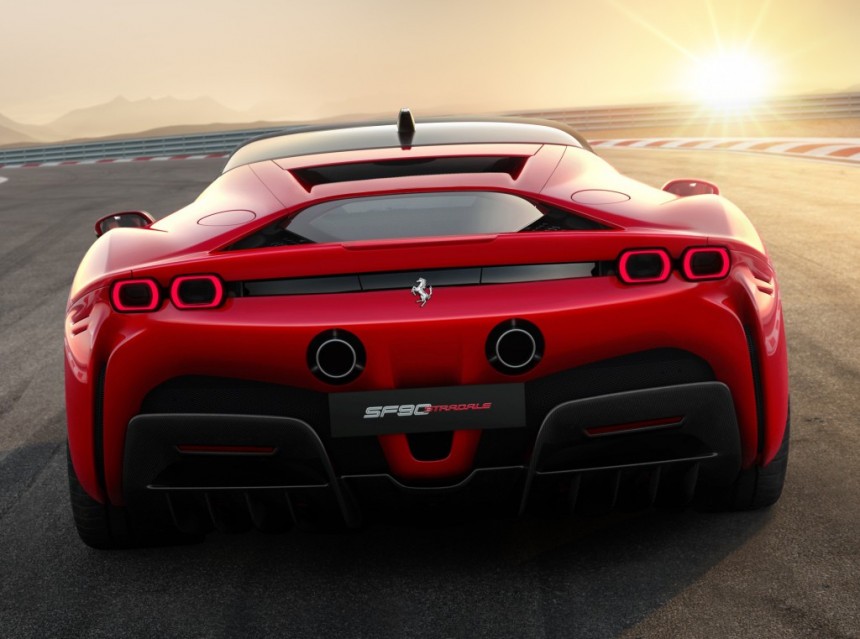Zero to 60 miles per hour (make that 100 kilometers per hour) is a popular way of measuring a vehicle’s performance. When it comes to high-performance automobiles, few enthusiasts remember to look into the stopping power of the cars they’re interested in or intend to purchase.
But first, we should remind ourselves how braking systems have evolved over the years. The most archaic of the bunch consisted of a block of wood and a lever. Simple as that! The increasing popularity of pneumatic rubber tires led to the mass adoption of mechanical drum brakes, a design credited to Gottlieb Daimler and Louis Renault in equal measure. Come 1917, American engineer Malcolm Loughead patented the hydraulic brake.
The gentleman who formed the Alco Hydro-Aeroplane Company in 1912, a.k.a. Lockheed Corporation, patented the hydraulic brake in 1917. Duesenberg is the first automaker to embrace this technology in the Model A, a technology that became the industry’s golden standard by the 1930s. Curiously enough, British engineer William Lanchester had already patented the disc brake in 1902. As cars and trucks became heavier and faster, the automotive industry slowly but steadily pivoted to the discs.
But as brakes became more effective than ever before, another issue arose, that issue being the front wheels locking up under hard braking. French automobile and aircraft pioneer Gabriel Voisin is considered the father of anti-lock brakes for experimenting with systems designed to modulate the hydraulic braking pressure to reduce the risk of slippage.Introduced in 1966, the Jensen FF is the first series-production car to feature an anti-locking braking system (ABS), developed together with Dunlop-Maxaret, although it was named anti-skid.
That being said, let’s find out which are the five best-braking production cars out there. It should be mentioned that three of the five nameplates that made our list are no longer in production at press time, and it should also be mentioned that the braking distances from 60 mph come courtesy of independent tests conducted by car mags rather than manufacturers.
The GT2 rolled out in 1993 for the 993 generation, initially built for homologation requirements. Offered between 2017 and 2019 for the 2018 to 2020 model years, the 991-generation GT2 RS is the most badass of them all, at least until the 992 comes into focus. Unveiled at the Xbox 2017 E3, then launched at the 2017 Goodwood Festival of Speed, the most powerful Neunelfer to date is a road-legal track weapon that goes like stink.
Porsche famously described its ceramic composite brakes as the best braking system ever developed by the Stuttgart-based automaker. Measuring 410 millimeters (16.1 inches) up front and 390 millimeters (15.4 inches) in the back, said rotors are joined by six- and four-piston aluminum monobloc calipers finished in Porsche’s trademark bright yellow.
Essentially a lighter and more powerful 911 Turbo with rear-wheel drive instead of all-wheel drive, the GT2 RS packs a simply insane 690 horsepower (700 ps) at 7,000 revolutions per minute from a 3.8-liter sixer. The force-fed boxer engine also makes 553 pound-feet (750 Nm) of tire-shredding torque between 2,500 and 4,500 revolutions per minute.
The Viper has always been a white-knuckle ride, regardless of variant. However, the VX-generation American Club Racing stands out as the most extreme of the breed. Previewed by a concept at the 2014 SEMA Show, the Viper ACR was introduced in 2015 for the 2016 model year with a base price of $121,395 in the U.S. ($152,635 adjusted for inflation).
The single most important option came in the form of the Extreme Aero Package, which helped the Viper ACR set records at 13 road courses. In the hands of Randy Pobst, the slithering serpent lapped the Laguna Seca Raceway in 1 minute and 28 seconds. By comparison, Randy couldn’t squeeze out more than 1:29.89 from the Porsche 918 Spyder.
Equipped with Brembo-supplied carbon ceramic matrix brakes, the corner-carving Viper ACR uses two-piece front and rear rotors squeezed by six- and four-piston calipers. In conjunction with the Extreme Aero Package, the V10-engined monster develops a short ton (2,000 pounds) of downforce at 177 miles per hour (285 kilometers per hour). Not bad, huh?
Equipped with the Z07 package and carbon-fiber wheels, the C8 Z06 needs 95 feet (29 meters) to stop from 60 miles per hour. That’s pretty impressive but not as good as the C7 ZR1. Unveiled at the 2017 Dubai Motor Show instead of an American event, the most powerful Corvette you can legally drive on public roads is a very different animal from the C8 Z06 under the hood as well, for it packs a good ol’ small block and a blower.
Codenamed LT5 as opposed to the free-breathing and flat-plane crankshaft LT6 of the C8 Z06, the 6.2-liter V8 in the C7 ZR1 is the only fifth-gen small block equipped with dual injection. It produces a supercar-shaming 755 ponies (765 ps) at 6,300 revolutions per minute, and torque peaks at 4,400 revolutions per minute to the tune of 715 pound-feet (969 Nm).
Similar to the Viper ACR, the ultimate expression of the seventh-generation Corvette was offered with an extreme aero package. RPO code ZTK added a higher fixed rear wing, carbon-fiber end caps for the front splitter, Michelin Pilot Sport Cup 2 rubber boots, and specific chassis and magnetic ride control settings. As opposed to the DCT-only C8, every variant of the C7 could be had with a torque-converter auto or a manual box.
The second Porsche to make our list is a tad smaller than the GT2 RS and less powerful to boot. But still, the 718 Cayman GT4 RS is a thriller in the twisties, unlike any other 718 Cayman before it. A purist’s delight powered by a naturally-aspirated sixer, the first Cayman to receive the coveted Rennsport moniker can also be configured with a go-faster pack.
In this case, opting for the Weissach gets you carbon-weave goodies, 935-inspired titanium tailpipes, a roll cage also made of titanium, and Race-Tex for the upper section of the dash. Prospective customers are further offered a set of 20-inch forged magnesium wheels as an optional extra over the standard-issue forged aluminum wheels. It’s not cheap, though…
$63,400 sans destination tax buys you a brand-new 718 Cayman with a four-cylinder turbo. The no-nonsense GT4 RS is $149,100 right off the bat, and the Weissach package adds $13,250 to the tally. The forged magnesium wheels are currently listed at $15,640 by the U.S. configurator.
The final entry also happens to be the only plug-in hybrid on the list. Gifted with the most desirable badge in the supercar-making biz, the SF90 Stradale is the first plug-in hybrid from the Maranello-based automaker. Although the LaFerrari can be plugged in as well, it does blur the line between hybrid and plug-in hybrid due to its Formula 1-inspired kinetic energy recuperation system and the lack of a button for electric-only drive mode.
The SF90 Stradale marks the introduction of the Assetto Fiorano package to the stable. It includes GT racing-derived shock absorbers from Canadian outfit Multimatic. Carbon-fiber door panels, a carbon-fiber underbody, titanium springs, and a titanium exhaust are featured as well, dropping 66 pounds (around 30 kilograms) off the standard specification.
World-class stopping power wouldn’t be possible without a good set of tires, namely Michelin Pilot Sport Cup 2 tires developed specifically for this application with a softer compound and fewer groovers than the standard tires. Equipped with a brake-by-wire system, the SF90 Stradale also knows how to split the braking torque between the hydraulic system and electric motors. Referred to as brake torque blending, this combo improves braking performance while also juicing up the 7.9-kWh battery pack.
The gentleman who formed the Alco Hydro-Aeroplane Company in 1912, a.k.a. Lockheed Corporation, patented the hydraulic brake in 1917. Duesenberg is the first automaker to embrace this technology in the Model A, a technology that became the industry’s golden standard by the 1930s. Curiously enough, British engineer William Lanchester had already patented the disc brake in 1902. As cars and trucks became heavier and faster, the automotive industry slowly but steadily pivoted to the discs.
But as brakes became more effective than ever before, another issue arose, that issue being the front wheels locking up under hard braking. French automobile and aircraft pioneer Gabriel Voisin is considered the father of anti-lock brakes for experimenting with systems designed to modulate the hydraulic braking pressure to reduce the risk of slippage.Introduced in 1966, the Jensen FF is the first series-production car to feature an anti-locking braking system (ABS), developed together with Dunlop-Maxaret, although it was named anti-skid.
That being said, let’s find out which are the five best-braking production cars out there. It should be mentioned that three of the five nameplates that made our list are no longer in production at press time, and it should also be mentioned that the braking distances from 60 mph come courtesy of independent tests conducted by car mags rather than manufacturers.
991-generation Porsche 911 GT2 RS (87 feet or 27 meters)
Porsche famously described its ceramic composite brakes as the best braking system ever developed by the Stuttgart-based automaker. Measuring 410 millimeters (16.1 inches) up front and 390 millimeters (15.4 inches) in the back, said rotors are joined by six- and four-piston aluminum monobloc calipers finished in Porsche’s trademark bright yellow.
Essentially a lighter and more powerful 911 Turbo with rear-wheel drive instead of all-wheel drive, the GT2 RS packs a simply insane 690 horsepower (700 ps) at 7,000 revolutions per minute from a 3.8-liter sixer. The force-fed boxer engine also makes 553 pound-feet (750 Nm) of tire-shredding torque between 2,500 and 4,500 revolutions per minute.
Phase VX Dodge Viper ACR (87 feet or 27 meters)
The single most important option came in the form of the Extreme Aero Package, which helped the Viper ACR set records at 13 road courses. In the hands of Randy Pobst, the slithering serpent lapped the Laguna Seca Raceway in 1 minute and 28 seconds. By comparison, Randy couldn’t squeeze out more than 1:29.89 from the Porsche 918 Spyder.
Equipped with Brembo-supplied carbon ceramic matrix brakes, the corner-carving Viper ACR uses two-piece front and rear rotors squeezed by six- and four-piston calipers. In conjunction with the Extreme Aero Package, the V10-engined monster develops a short ton (2,000 pounds) of downforce at 177 miles per hour (285 kilometers per hour). Not bad, huh?
C7 Chevrolet Corvette ZR1 (88 feet or 27 meters)
Codenamed LT5 as opposed to the free-breathing and flat-plane crankshaft LT6 of the C8 Z06, the 6.2-liter V8 in the C7 ZR1 is the only fifth-gen small block equipped with dual injection. It produces a supercar-shaming 755 ponies (765 ps) at 6,300 revolutions per minute, and torque peaks at 4,400 revolutions per minute to the tune of 715 pound-feet (969 Nm).
Similar to the Viper ACR, the ultimate expression of the seventh-generation Corvette was offered with an extreme aero package. RPO code ZTK added a higher fixed rear wing, carbon-fiber end caps for the front splitter, Michelin Pilot Sport Cup 2 rubber boots, and specific chassis and magnetic ride control settings. As opposed to the DCT-only C8, every variant of the C7 could be had with a torque-converter auto or a manual box.
982-generation Porsche 718 Cayman GT4 RS (89 feet or 27 meters)
In this case, opting for the Weissach gets you carbon-weave goodies, 935-inspired titanium tailpipes, a roll cage also made of titanium, and Race-Tex for the upper section of the dash. Prospective customers are further offered a set of 20-inch forged magnesium wheels as an optional extra over the standard-issue forged aluminum wheels. It’s not cheap, though…
$63,400 sans destination tax buys you a brand-new 718 Cayman with a four-cylinder turbo. The no-nonsense GT4 RS is $149,100 right off the bat, and the Weissach package adds $13,250 to the tally. The forged magnesium wheels are currently listed at $15,640 by the U.S. configurator.
Ferrari SF90 Stradale (90 feet or 27 meters)
The SF90 Stradale marks the introduction of the Assetto Fiorano package to the stable. It includes GT racing-derived shock absorbers from Canadian outfit Multimatic. Carbon-fiber door panels, a carbon-fiber underbody, titanium springs, and a titanium exhaust are featured as well, dropping 66 pounds (around 30 kilograms) off the standard specification.
World-class stopping power wouldn’t be possible without a good set of tires, namely Michelin Pilot Sport Cup 2 tires developed specifically for this application with a softer compound and fewer groovers than the standard tires. Equipped with a brake-by-wire system, the SF90 Stradale also knows how to split the braking torque between the hydraulic system and electric motors. Referred to as brake torque blending, this combo improves braking performance while also juicing up the 7.9-kWh battery pack.
